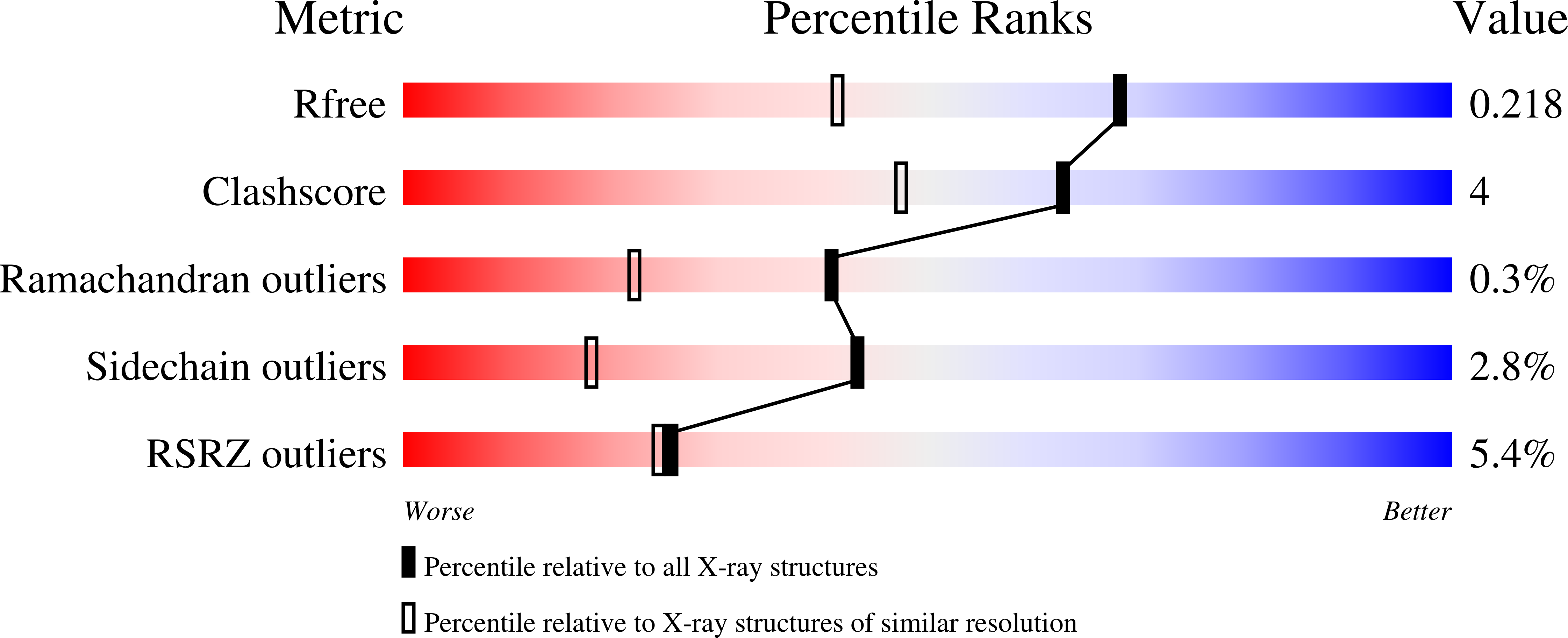Protein conformational change delayed by steric hindrance from an N-linked glycan.
Bager, R., Johansen, J.S., Jensen, J.K., Stensballe, A., Jendroszek, A., Buxbom, L., Sorensen, H.P., Andreasen, P.A.(2013) J Mol Biol 425: 2867-2877
- PubMed: 23702291
- DOI: https://doi.org/10.1016/j.jmb.2013.05.007
- Primary Citation of Related Structures:
4DTE, 4KDS - PubMed Abstract:
Very few studies have attributed a direct, active, functional role to N-linked glycans. We describe here an N-linked glycan with a unique role for maintaining the active conformation of a protein of the serpin family. The distinguishing feature of serpins is the "stressed-to-relaxed" transition, in which the reactive center loop inserts as a β-strand into the central β-sheet A. This transition forms the basis for the conversion of serpins to the inactive latent state. We demonstrate that plasminogen activator inhibitor-1 (PAI-1) from zebrafish converts to the latent state about 5-fold slower than human PAI-1. In contrast to human PAI-1, fish PAI-1 carries a single N-linked glycan at Asn185 in the gate region through which the reactive center loop passes during latency transition. While the latency transition of human PAI-1 is unaffected by deglycosylation, deglycosylated zebrafish PAI-1 (zfPAI-1) goes latent about 50-fold faster than the glycosylated zfPAI-1 and about 25-fold faster than non-glycosylated human PAI-1. X-ray crystal structure analysis of glycosylated fish PAI-1 confirmed the presence of an N-linked glycan in the gate region and a lack of glycan-induced structural changes. Thus, latency transition of zfPAI-1 is delayed by steric hindrance from the glycan in the gate region. Our findings reveal a previously unknown mechanism for inhibition of protein conformational changes by steric hindrance from N-linked glycans.
Organizational Affiliation:
Department of Molecular Biology and Genetics, Aarhus University, Gustav Wieds Vej 10C, 8000 Aarhus C, Denmark.















